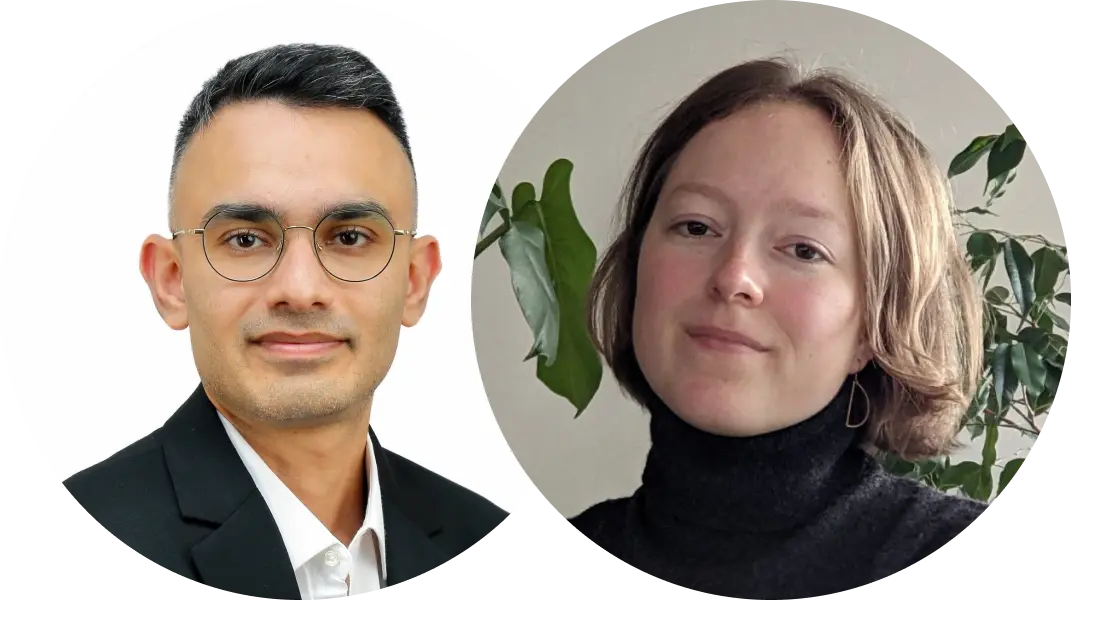Q: What problems are you solving with SAInt?
Ashok Krishnan: Long-duration energy storage (LDES) is an industry segment that has become important in the last couple of years, primarily driven by the growing penetration of renewable energy sources.
As a result, energy storage systems increasingly need to discharge for longer periods. In the past, you might have had energy storage systems discharging for two hours, three hours, even four hours. There is an increasing requirement for energy storage systems to discharge at full capacity for eight hours and above, which is the market segment that we target.
The whole point of doing power systems modeling with SAInt is to understand the value Liquid Air Energy Storage can bring to the grid, and then to take that a step further and build a solid business case for investors.
Mimi Mokka: We generally have two different use cases for SAInt. We have day-to-day business activities where we use modeling to engage the customer better. And then we have longer-term strategies where we use SAInt to model grid-scale scenarios to advance our cause.
For example, If I go to a customer who's working to set up a solar PV park and they're interested in having energy storage, they come to us and ask:
Do you have a storage configuration that would go with this specific setting?
What would be the cost of the storage?
What would be the dispatch profiles of the solar PV and storage plants in that scenario?
In that case, we use SAInt to model small, renewable energy-based systems to get LCOE (levelized cost of energy) estimates and dispatch profiles to share with the customer.
Q: How do you use SAInt in your workflow?
Mimi Mokka: The first step is to define: What is a good LAES configuration for a given application? What are the optimal capacities for different components of the system in a specific scenario? We would start with a capacity expansion model, which is offered by SAInt.
Once we have those capacity expansion modeling results, we use them as inputs in a production cost model also provided by SAInt. After running the PCM we may identify a need to rerun the CEM, and we then move back and forth between the two models within SAInt to arrive at an optimal solution.
Q. What types of energy systems have you modeled using SAInt?
Ashok Krishnan: SFW has been evaluating different markets across the globe. Most recently, we have been evaluating the Southwest Interconnected System (SWIS) in Western Australia.
Western Australia is planning to retire all the state-owned coal-fired power stations by 2030, and we are using SAInt to understand how a combination of different generation and energy storage technologies can help Western Australia transition to a decarbonized future.
We have used capacity expansion models in SAInt to understand what role Liquid Air Energy Storage technology can play in the overall mix of generation and storage technologies operating on the SWIS. The results have suggested that LAES does have a role to play in a decarbonized SWIS in Western Australia.
Other examples of systems SFW has modelled include the European interconnected power system and the Indian power system.
We used encoord’s dataset to understand what capacity of LAES would be required in the system under different future scenarios considering various renewable energy penetration levels, ancillary service requirements, carbon pricing, and so on.
Q. How has SAInt supported more complex or advanced modeling needs?
Ashok Krishnan: We have also been modeling individual tenders and business cases in different countries. These are typically smaller modeling problems in which we try to understand what combination of renewable energy sources and LAES can best meet a particular load profile.
SFW has also utilized SAInt to simulate how a LAES system would perform in the Wholesale Electricity Market (WEM) in Western Australia considering the price trends from 2023-2024 and then projecting those into the next 20 years. This was done to understand how much revenue a LAES plant could potentially earn by operating on the WEM.
We are also working on an ACOPF [AC optimal power flow] simulation of the Southwest Interconnected System to understand which nodes in the system might benefit from having LAES. We are studying voltage magnitudes and angles at specific nodes, studying the power flows in the network, and using that information to determine a node where the LAES can have the maximum impact on the grid.
This helps to inform our business plans because we can then work with local developers to identify suitable specific nodes in the network and proceed onwards with the project development in that particular location.
Q: Based on your experience, what is unique or different about SAInt compared to other modeling tools?
Ashok Krishnan: I think one of the reasons we chose SAInt was that SAInt was able to perform a wider range of simulations than most of the other tools available in the market. And I’m specifically referring to the fact that it does have capabilities to perform full ACOPF simulations. This is a feature which helps SAInt stand out from some of the other tools available on the market.
Mimi Mokka: A big plus for SAInt was specifically that it had the option of using the graphical user interface, which is very easy to use and intuitive. We also have the option of using the API, and that enables us to automate and streamline our different processes. My understanding is that that’s not necessarily possible for other software—you usually have one or the other.
Q: Can you share your experience working with the encoord team?
Ashok Krishnan: The interaction with the encoord team has been quite positive. As a person with a fair bit of modeling experience, it has been good to interact directly with the development team of encoord, understanding their approach to developing the software, and sharing our feedback after extensively using various features.
It’s been a really positive experience interacting with the team. The encoord team is very receptive to feedback from the customer.
I honestly believe that no power system simulation tool available on the market is perfect, but I think the attitude of the development team is important in this context in terms of how receptive they are to feedback and how open they are to improving the software and helping customers by developing specific features which they may require. I think encoord has ticked all these boxes from my point of view.
Mimi Mokka: Our relationship with encoord is one of the reasons we opted for SAInt and continue to be users. We feel like we can influence how the software gets developed, and we’ve suggested improvements based on our specific needs. It has been very useful for us. And not many software options offer such a diverse selection of inputs for storage technologies, so SAInt has become a very flexible tool for our use.
It has been very reassuring and useful to know that I can always ask for help and it comes very fast and very easily. I feel like someone at encoord always knows what our specific needs are and where we’re going with our modeling, and what we’re aspiring to do.
I feel we’ve built this very lasting and good connection with encoord.







